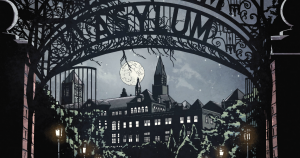
Why Pelvic Pain Is Absent from YA Fiction
An estimated 1 in 7 women suffer from chronic pelvic pain; it’s bizarre and disappointing that despite these statistics, there are distinctly zero characters with this condition.

An estimated 1 in 7 women suffer from chronic pelvic pain; it’s bizarre and disappointing that despite these statistics, there are distinctly zero characters with this condition.

When we see institutions in YA, we usually see them in one of two contexts: a “sane” person wrongly incarcerated in one, or a spooky (often old, sometimes abandoned but haunted by ghosts) asylum filled with “crazy people.”
It wasn’t until I was an adult that I could finally understand that from the time of my diagnosis, my education was not going to be “complete,” because I did not have the full access I needed. It was as if intensive speech therapy and itinerant teachers were more important than having a sign language interpreter in my classes.

Predictably, many of the tropes relating to D/deaf and hard of hearing characters deal with communication methods and degree of hearing loss. Most, if not all, of these tropes have to do with people’s assumptions and wishful thinking about hearing loss.

A mistake I see a lot of writers who write about disability make is asking only one person for help. I’ve heard so many people say things like, “I have a cousin who is blind, and she read the book and said it was good at portraying blindness.”
Here’s the thing no one tells you about people with a medical condition: The disease is always on their mind, but they don’t always want to think about it.

Romanticization is a common element of mental illness narratives, including many in the YA category; what kind of message does that send?